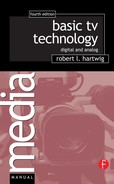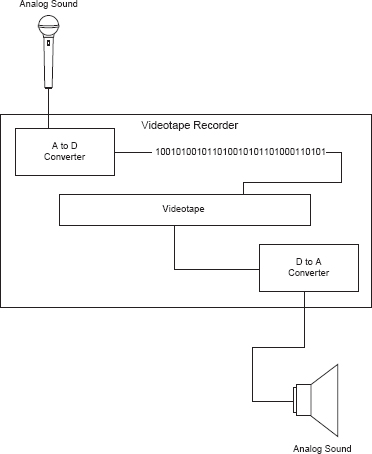Sound Recorders for Video
For all practical purposes, analog recording is no longer used for video productions; virtually all of the video recorders and camcorders sold today are digital. For the video production person these will be the primary recording devices for both picture and sound. Most of the concepts you learned for digital video also apply to digital audio. Terms like sampling rate, quantizing, processing levels, compression, A to D converters, and D to A converters also apply to audio. There are specific differences, of course. For digital video we use high sampling rates (in the megahertz range) and relatively low processing levels (8- or 10-bit processing). For digital audio it is the opposite: low sampling rates (48,000 Hz for audio on digital videotape) and very high processing (16 bit). Audio compression is also done differently by dividing the frequency range into different bands of frequencies and compressing them separately. But the idea of removing redundancies and eliminating things you can't hear anyway to reduce bandwidth needs is similar.
The recording process is similar as well. Sound will enter the recorder from the microphone. That sound will enter an A to D converter, where it will be digitized and put down on the recording medium as a series of 0s and 1s. When the material is played back, it will go through a D to A converter and be converted back to analog sound. With the best quality machines, uncompressed audio will be recorded. In order to save bandwidth and money, lower quality machines will use compressed audio.
DAT
Very rarely in a video production will you go out in the field and record sound without also recording the picture. If you do, you will probably use a DAT (digital audiotape) recorder. Like a videotape recorder, the DAT machine uses a rotating headwheel that moves in the opposite direction to the tape. While DAT recorders play and record high-quality sound, there are two major problems with them. First, the machines are somewhat delicate and have to be handled very carefully, and they are quite easy to break. Second, downloading the information to a computer for editing takes real time. That is, an hour tape takes an hour to download.
Video sound often starts at a microphone as analog sound that is converted to digital for recording, and is reconverted to analog for playback on a speaker.

